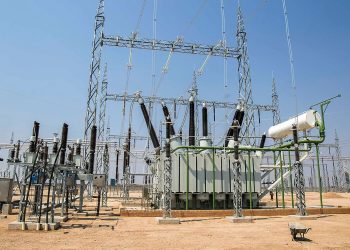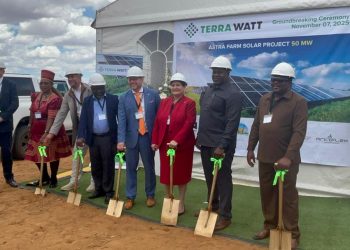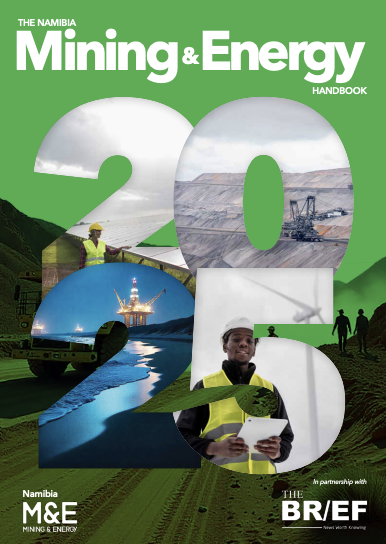
By Set-son Shifidi
The Government of the Republic of Namibia, guided by the SWAPO Party manifesto, has identified nuclear energy as a strategic priority.
This initiative aims to diversify the national energy mix, enhance energy security, and support long-term sustainability.
Namibia currently imports more than half of its electricity, despite having abundant solar and wind resources. However, the intermittent nature of these sources limits their reliability. Nuclear energy offers a stable and continuous power supply that complements renewables, reduces reliance on imports, and supports energy independence.
With some of the world’s largest uranium reserves, Namibia is well-positioned to develop a domestic nuclear program that can also stimulate economic growth and job creation.
A diversified energy mix that includes renewables, nuclear power, and hydropower is essential for Namibia’s future. While solar and wind will remain important, their variability highlights the need for a dependable energy source.
Nuclear energy meets this need by stabilizing the grid and supporting industrial and economic development. Its near-zero carbon emissions also make it a valuable tool in achieving national climate goals. By adopting this integrated approach, Namibia can enhance its energy resilience and emerge as a leader in sustainable energy in the region.
GLOBAL AND REGIONAL CONTEXT
Globally, nuclear power contributes approximately 9 percent of total electricity generation. The United States leads in production with over 779,000 GWh annually, followed by China, France, Russia, and South Korea. France is particularly notable, with nearly 65 percent of its electricity generated from nuclear energy with the highest national share in the world.
These figures highlight the significant role nuclear power plays in the energy strategies of major economies, especially in ensuring a stable and low-carbon electricity supply.
In contrast, nuclear energy remains largely underutilized across Africa, accounting for less than 2 percent of the continent’s electricity generation. South Africa is currently the only African nation with an operational nuclear power plant.
However, momentum is building as countries like Egypt, Uganda, and Rwanda actively pursue nuclear development programs. This growing interest signals a shift toward embracing nuclear technology as a viable solution for energy security and sustainable development on the continent.
COST-EFFECTIVE SMALL NUCLEAR REACTORS
Small modular nuclear reactors provide a flexible and cost-effective energy option for Namibia. Their compact design and rapid deployment make them well-suited to the country’s infrastructure and energy needs. According to Lazard’s 2025 Levelized Cost of Energy analysis, these reactors are economically competitive, with an estimated cost of N$1.60 to N$2.30 per kilowatt-hour, depending on location and other factors.
The Levelized Cost of Electricity (LCOE) is a measure of the average cost to generate one kilowatt-hour of electricity over the lifetime of a power plant, accounting for construction, operation, maintenance, and fuel costs.
By comparison, electricity from liquefied natural gas costs N$1.80 to N$2.60, biomass N$2.00 to N$2.80, and concentrated solar power N$2.40 to N$3.40 per kilowatt-hour. Although hydropower is cheaper at N$1.20 to N$2.00, its reliability in Namibia is increasingly affected by shared river systems and climate-related challenges.
STRATEGIC ROADMAP FOR NUCLEAR ENERGY DEVELOPMENT
Successfully launching a nuclear energy program requires a deliberate and phased approach. Namibia can learn from other African countries already making progress in this field. The following five pillars outline a comprehensive path forward:
- Establish a National Policy and Legal Framework
Namibia should develop a clear national policy and legal structure to support nuclear energy. This includes creating an independent regulatory authority to ensure safety and compliance.
- Build Human Capacity and Technical Expertise
A skilled workforce is essential. Namibia should invest in education and training in nuclear science and engineering. Rwanda’s partnership with a Russian state-owned company to establish a nuclear science Centre highlights the importance of strategic collaboration.
iii. Conduct Feasibility and Environmental Assessments
Comprehensive assessments are needed to identify suitable sites, reactor types, and infrastructure requirements while addressing environmental and safety concerns.
- Secure Strategic Partnerships and Financing
Nuclear projects require significant investment. Namibia can follow Egypt’s example by partnering with experienced countries and seeking funding from development banks and climate finance sources.
- Promote Public Awareness and Transparency
Public trust is essential. Clear communication and educational campaigns can help build public confidence and support.
TIMELINE AND THE IMPORTANCE OF STARTING NOW
Developing nuclear power is a long-term commitment that requires careful planning and sustained effort. According to the International Atomic Energy Agency (IAEA), even an accelerated process that includes policy development, regulatory preparation, construction, and commissioning can take up to ten years. This highlights the importance of Namibia beginning the necessary groundwork as soon as possible.
Taking early action will help the country meet its future energy needs, reduce carbon emissions, and build a more resilient and self-sufficient energy system. Delaying this process could prolong reliance on electricity imports and lead to missed opportunities for economic growth, technological advancement, and national energy independence.
*Set-son Shifidi is an energy engineer and director at Lithon Project Consultants, a local engineering consulting firm. However, he writes this in his own capacity.







